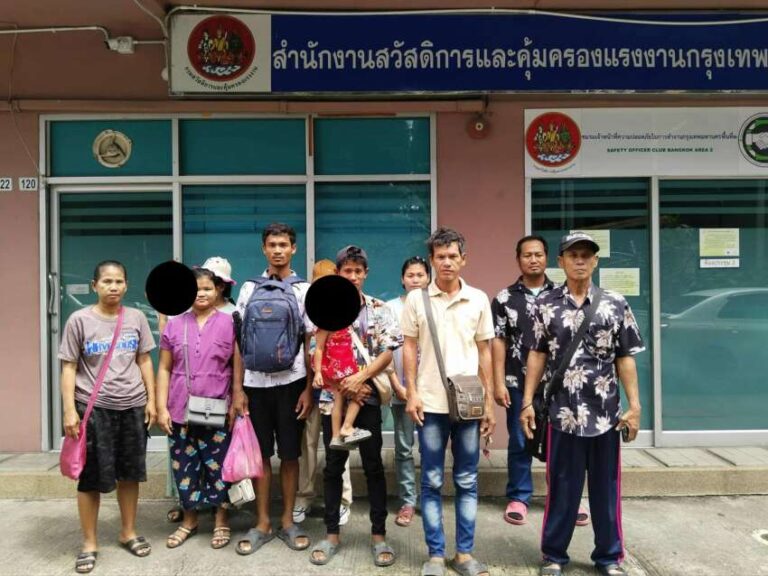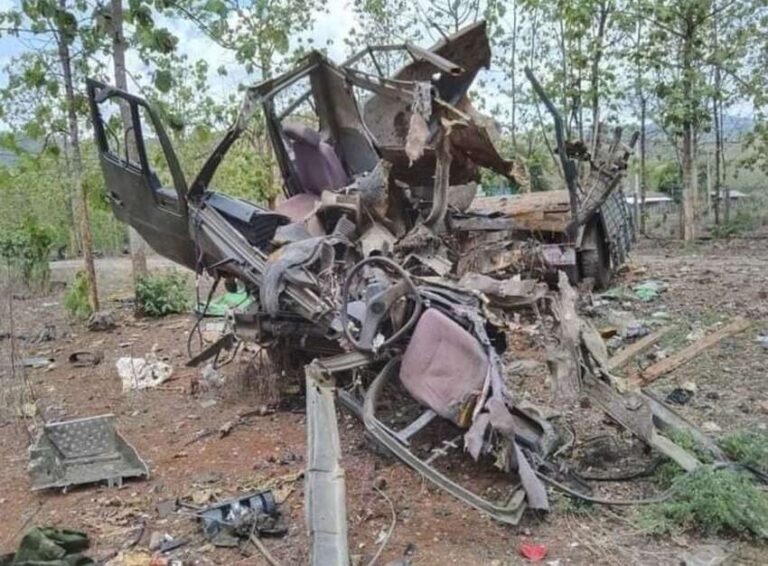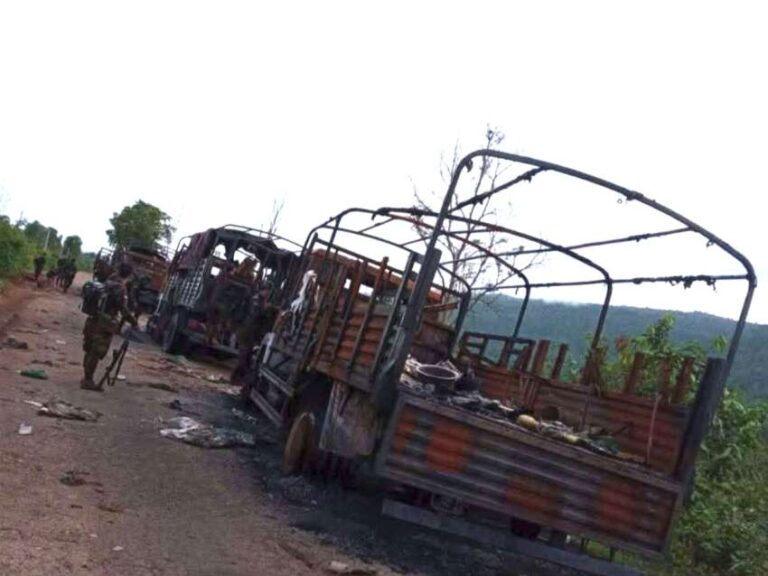
The People’s Defense Force in Thaung Tha Township has confirmed that an attack on a military council checkpoint and staff housing in Thaung Tha city, Mandalay Region, resulted in the death of four military council soldiers and the capture of 11 non-CDM staff members. The attack took place on May 19, targeting a heavily fortified military council checkpoint with concrete bunkers at the Mingalar Oo ward near the Thaung Tha-Kyaukpadaung road exit, and staff housing in Butakone ward of Thaung Tha city. Revolutionary forces conducted simultaneous raids on both locations.
During the attack on the Mingalar Oo checkpoint, two military council soldiers were killed instantly, with several others wounded, forcing the remaining soldiers to abandon their posts. Revolutionary forces searched the checkpoint buildings and concrete bunkers, seizing 9.6 million kyats, one short-barrel gun, 1,508 rounds of ammunition, four MA1 magazines, and two G3 magazines. The checkpoint structures were subsequently burned down. When military reinforcements arrived at the battle site, additional fighting broke out with the convoy, resulting in two more military council soldier casualties and several injuries among the reinforcement troops.
In the operation targeting the staff housing area, resistance forces successfully captured eleven non-CDM staff members who had been collaborating with the military council, effectively disrupting the council’s administrative mechanisms. This coordinated attack was carried out through the joint efforts of the Thaung Tha Township People’s Defense Force, Meiktila Township People’s Defense Force, and the Naypyidaw PDF Battalion 801 Thaung Tha Operations Group. The success of this operation demonstrates the growing capabilities of revolutionary forces in the region and their ability to coordinate complex military operations.
Local sources indicate that these successful attacks will likely reduce the military council’s ability to oppress local civilians in the area while demonstrating the increasing military capabilities of resistance forces. The operation’s success is attributed to careful planning and coordination between multiple resistance groups, showing their ability to execute complex military operations effectively. The seizure of weapons, ammunition, and the capture of military council collaborators represents a significant blow to the military council’s control over the area and their ability to maintain their administrative structure in the region.



